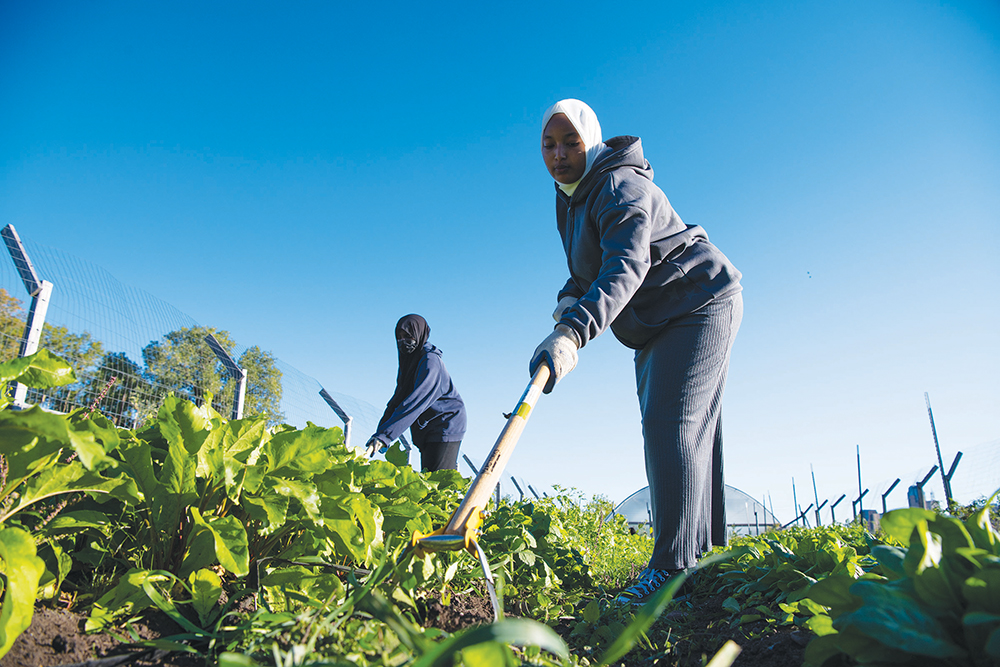Sustainable Agriculture Research & Education (SARE) is a U.S. Department of Agriculture National Institute of Food and Agriculture (NIFA) grants and outreach program. SARE is divided into four regions with the Southern SARE program operating under the cooperative agreements of University of Georgia, Fort Valley State University and the Kerr Center for Sustainable Agriculture. Southern SARE supports sustainable agriculture efforts in 13 states and two U.S. territories. Competitive research grants are the primary tools of the SARE program.
What is Sustainable Agriculture?
Every day, farmers and ranchers around the world develop new, innovative strategies to produce and distribute food, fuel and fiber sustainably. While these strategies vary greatly, they all embrace the following broad, long-term goals:
- Profitability: Employ farming strategies that enable farmers to remain profitable over the long term; and to grow enough food and fiber to meet humanity's needs;
- Stewardship: Enhance the quality of the land, water and air; and make the most efficient use of nonrenewable resources;
- Quality of Life: Promote the strength and well-being of farmers/ranchers, their families and society as a whole.
There are almost as many ways to reach these goals as there are farms and ranches in America. One thing sustainable farmers/ranchers have in common is they look at their farm or ranch from a holistic perspective and develop an integrated management plan that uses principles from nature. Check out this SARE sampler of proven practices.
Southern SARE Vision and Mission
SARE seeks out innovations in sustainable agriculture, and rewards grant applicants who offer interesting and potentially workable ideas. SARE also emphasizes outreach and the dissemination of project results so the grant programs will have the widest possible benefits.
Southern SARE's vision is an enduring American agriculture of the highest quality. This agriculture is profitable, protects the nation's land and water, and is a force for a rewarding way of life for farmers and ranchers whose quality products and operations sustain their communities and society.
Southern SARE's mission is to advance—to the whole of American agriculture—innovations that improve profitability, stewardship and quality of life by investing in groundbreaking research and education.
Southern SARE Program Objectives
SSARE focuses on the following program objectives to position agricultural communities so the most sustainable approaches available permeate U.S. agriculture. The result is food, fiber and animal products are sustainably produced in healthy communities in an environment where farmers are respected, rewarded and encouraged to innovate.
- Strengthen the family farm system, regardless of size, to position farmers and ranchers and their future generations for long-term profitability and stability.
- Promote effective stewardship of the nation’s natural resources by providing site-specific, replicable, and profitable sustainable farming and ranching methods that strengthen agricultural competitiveness; satisfy human food and fiber needs; maintain and enhance the quality and productivity of the soil; protect wildlife habitats; and improve the quality of surface and groundwater.
- Improve quality of life through efforts that strengthen rural communities and further urban agricultural endeavors by fostering partnerships, long-term economic stability, new technological innovations and business enhancement and advancements.
- Protect the environment through strategies that advocate adaptable agriculture through innovative, ecologically sound, mitigative, holistic, and sustainable methods for short-term and long-term farmer profitability.
- Address the needs and promote the successes of all farm audiences.
- Promote long-term, whole systems approaches to farming strategies that support a variety of crop, livestock and enterprises, and the well-being of animals.

